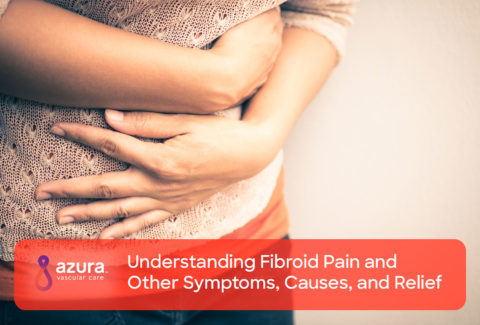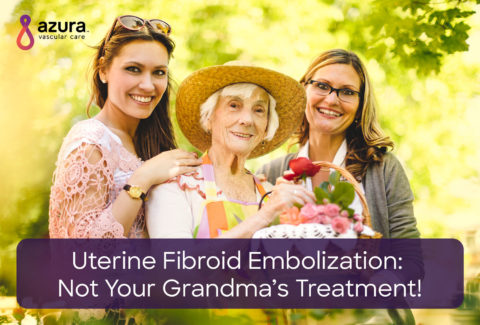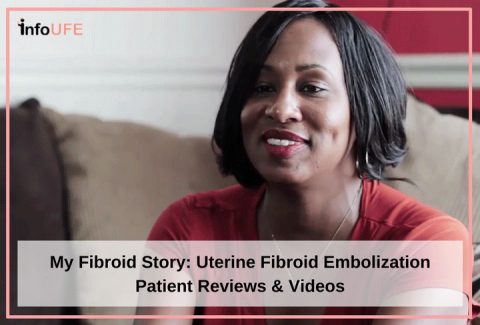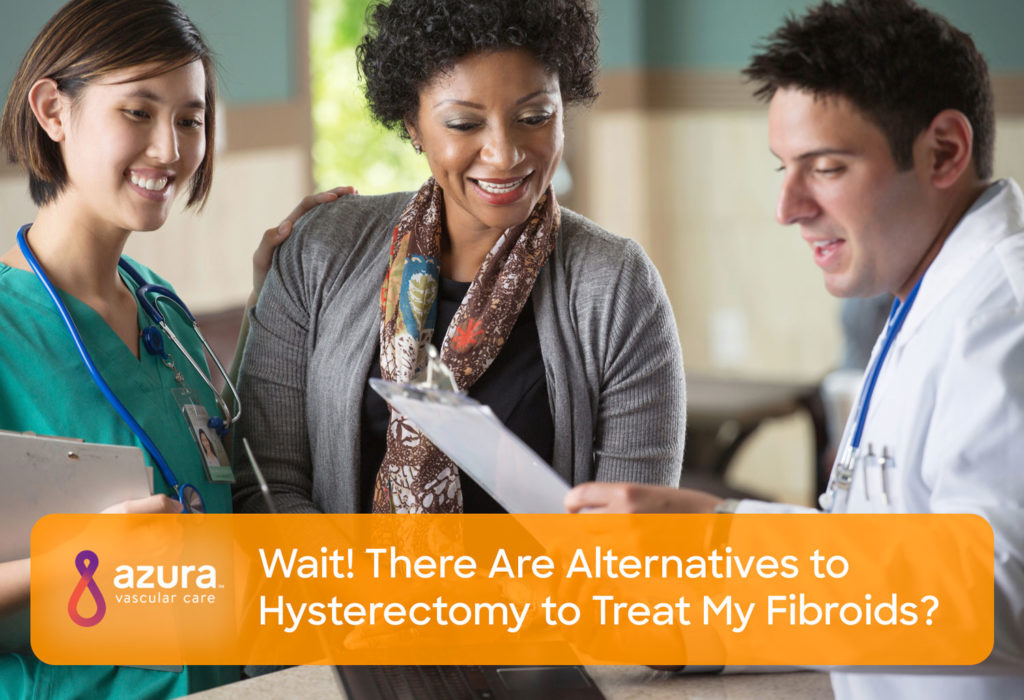
Uterine fibroids are the most common noncancerous growths in women. African American women are affected by uterine fibroids at a higher percentage than Caucasian women, which we reference below in more detail.
Once you know for sure that you have uterine fibroids, your next question most likely will be: what can I do to get relief from the discomfort and painful symptoms?
What are Uterine Fibroids?
Uterine fibroids, also called leiomyomas or myomas, are tumors that grow in the muscular wall of your uterus. Uterine fibroids are not cancerous but can still produce symptoms that significantly affect daily life.
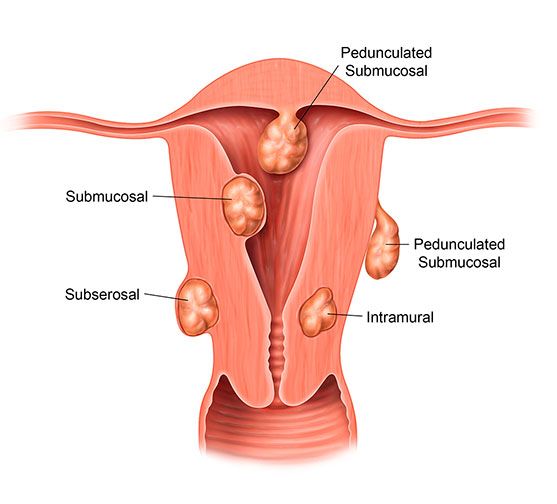
The good news is there are treatment options for uterine fibroids and they don’t all involve surgery.
African American Women and Fibroids
African American women, are three times more likely to develop uterine fibroids than other women and are also more likely to develop them at an earlier age. i,ii
According to a recent study, 80 – 90% of African American women and 70% of Caucasian women will develop uterine fibroids by age 50. iii In addition to getting them earlier and more often, African American women are also more likely to develop more than one fibroid. iii
Some women – those who do not have bothersome symptoms – may choose to simply do nothing at all about their uterine fibroids.
However, African American women who have developed fibroids are more likely to experience symptoms – such as heavy menstrual bleeding, longer periods, pelvic pain and anemia (which is a result of not having enough healthy red blood cells). And, unfortunately, their symptoms are also likely to be more significant. iv
According to a recent survey, a high percentage of African American women, said their uterine fibroids:
- Interfered with their physical activities
- Affected their personal relationships
- Caused them to miss work iv
African American women are more likely to learn about fibroids and get advice on how to treat them from sources other than their healthcare providers such as:
- Friends
- Family
- Health brochures iv
Often, another older female family member may have suffered from fibroids and had a hysterectomy to treat them. As a result, many women may opt to do the same.
Hysterectomy to Treat Uterine Fibroids
At one time, hysterectomy was the gold-standard treatment for uterine fibroids. A hysterectomy is the surgical removal of either part or your entire uterus. After a hysterectomy, you will no longer be able to become pregnant or bear children. So, if you’re of childbearing age and are considering having a family one day, it’s important that you understand hysterectomy might not be your only option for fibroid treatment.
African Americans Have Hysterectomies More Often
Many women – of all races – continue to seek out a hysterectomy to treat their fibroids for no other reason than because it’s what their grandmothers, mothers and aunts did in the past.
African American women have more hysterectomies than women of other races. In fact, one study shows that compared with other ethnic groups, African American women undergo twice as many hysterectomies than women of other races do. Many of these surgeries are performed to treat uterine fibroids. v
But Wait! A Hysterectomy is Not Your Only Option
Did you know that a hysterectomy may not be your only option for treating your uterine fibroids? In fact, if you are young and still hoping to have children, a hysterectomy might be the worst choice for you! Before you decide which treatment is right for, you should understand all your options.
If you’re experiencing unpleasant symptoms from uterine fibroids and are hoping to find a treatment option that will allow you to have children in the future, or just to keep your uterus intact, you might want to consider a minimally invasive treatment option, or a different type of surgery.
Let’s look at two alternatives to hysterectomy for uterine fibroid treatment:
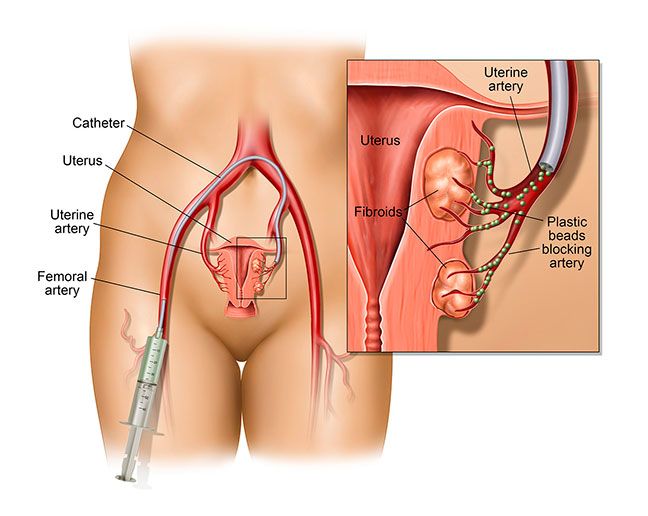
Uterine fibroid embolization is a minimally invasive procedure performed by an interventional radiologist. During the procedure, the interventional radiologist will access the femoral artery in the leg or the radial artery in the wrist. A tiny nick in the skin will be made and then a catheter will be inserted into the artery using real-time x-ray imaging, also known as fluoroscopy. A special dye, known as contrast, is then injected through the catheter which allows the interventional radiologist to visualize the blood vessels supplying the fibroid(s). vi Small spheres are injected through the catheter which blocks the arteries that supply blood to your fibroids. With the blood supply blocked off, the uterine fibroid(s) are starved of their needed blood supply, causing them to shrink and die.
A myomectomy is another surgical option that can be used to remove all types of fibroids. According to a study by the American Congress of Obstetricians and Gynecologists, a myomectomy can relieve symptoms related to uterine fibroids in 80 – 90% of patients. vii There are three different approaches to performing a myomectomy.
Hysteroscopy: A vascular specialist removes fibroids in the uterine cavity using a scope inserted into the uterus through the vagina and cervix.
Laparotomy: A vascular specialist makes a small incision in the abdomen and uterus, if necessary, to remove the fibroids.
Laparoscopy: A vascular specialist makes two small cuts in your abdomen and then inserts a laparoscope through one to locate and then dissect out and remove the fibroids
Before choosing a hysterectomy, you should talk to your healthcare provider so you fully understand the risks associated with a hysterectomy, as well as the benefits of the minimally invasive alternative treatment, uterine fibroid embolization, that is available.
Sources:
i Walker C.L., and Stewart E.A. (2005) Uterine fibroids: The elephant in the room. Science 308:1589–1592.
ii Huyck K.L., Panhuysen C.I., Cuenco K.T., et al. (2008) The impact of race as a risk factor for symptom severity and age at diagnosis of uterine leiomyomata among affected sisters. American Journal of Obstetrics and Gynecology 198(168): 161–169.
iii Baird, D. D., Dunson, D. B., Hill, M. C., Cousins, D., and Schectman, J. M. (2003) High cumulative incidence of uterine leiomyoma in black and white women: Ultrasound evidence. American Journal of Obstetrics and Gynecology, 188: 100–107.
iv Steward, E. A., Nicholson, W.K., Bradley, L., and Borah, B.J. (2013) The burden of uterine fibroids for African-American Women: Results of a national survey. Journal of Women’s Health 22(10): 807-816.
v Eltoukhi, H.M., Modi, M.N., Weston, M., Armstrong, A.Y., and Stewart, E.A. (2014) The health disparities of uterine fibroid tumors for African American women: A public health issue. American Journal of Obstetrics and Gynecology, 210(3): 194–199.
vi Gary P. Siskin1, Meridith Englander, Brian F. Stainken, Jiyong Ahn, Kyran Dowling and Eric G., (200) Embolic Agents Used for Uterine Fibroid Embolization. American Journal of Toentgenology, 175 (3). Retrieved from: http://www.ajronline.org/doi/full/10.2214/ajr.175.3.1750767
vii https://www.nichd.nih.gov/health/topics/uterine/conditioninfo/treatments/Pages/surgical-treatments.aspx

